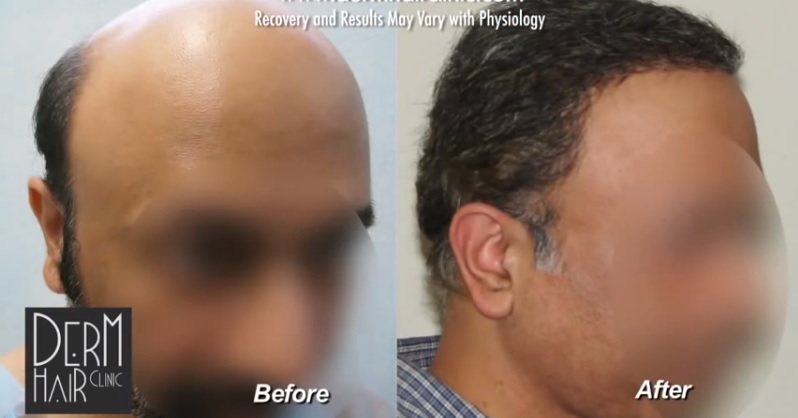A Possible New Pathway for Pattern Baldness
Medical treatment for hair loss primarily focuses on targeting DHT. Finasteride, for example, blocks the enzyme which converts testosterone to dehydrotestosterone in order to reduce the compound which causes hair follicles to miniaturize in those who are genetically predisposed to pattern baldness. Also hair transplant doctors strive to harvest grafts which are considered DHT resistant.
However, the pathway where PGD2 binds to the follicle protein receptor, GPR44, may hold the answer to developing a new form of drug treatment to help combat loss of hair due to androgenic alopecia.
Research Findings Supporting PGD2 as A Possible Cause of Genetic Baldness
According to Cotserelis’ presentation, androgenic alopecia is characterized by the following characteristics at the cellular level:
(1) Stem cells remain in tact
(2) Progenitor cells decrease. These are cells which are derived from stem cells and contribute to the formation of new hair
This observation seems to suggest that stem cell activation is inhibited. A couple of possibilities include:
(1) lack of an activating compound
(2) presence of an inhibiting agent.
Based on studies conducted, it is believed that PGD2 is the factor which inhibits the activation of stem cells from developing into progenitor cells.
Opposing Roles of Different Prostaglandins
Another prostaglandin which is believed to impact hair development is PGE2. This compound seems to support hair growth. And many experts believe that Rogaine helps to facilitate its activity as a medication used against hair loss.
According to studies, PGE2 and PGD2 seem to have opposing effects. Men with pattern baldness show high levels of PGD2. At the same time, they show lower levels of PGE2.
Research Which Supports PGD2’s Role in Hair Loss
(1) Scientists observed genetically modified mice which produced high amounts of cox-2, one of the precursor compounds in the pathway process which leads to the production of PGD2. These mice displayed the typical signs of androgenic alopecia with less hair and enlarged sebaceous glands.
(2) Human hair follicles were extracted and exposed to PGD2 within lab cultures. Hair growth was observed to be inhibited.
The Potential of GPR44 As A Treatment For Hair Loss in Men and Women
Researchers knocked out specific genes for hair protein receptors in mice. This method was used to determine which protein receptor PGD2 binds to when it inhibits hair growth. Mice which did not have the GPR44 receptor showed the longest hair growth compared to the other receptors that were tested.
Targeting this receptor by producing a drug compound which occupies it may lead to a hair loss medication for both men as well as women.
However, further research may be needed to determine how both DHT and PGD2 specifically contribute to the larger picture of baldness and thinning.
http://consumer.healthday.com/health-technology-information-18/genetics-news-334/research-spots-potential-new-target-in-fight-against-baldness-662952.html

